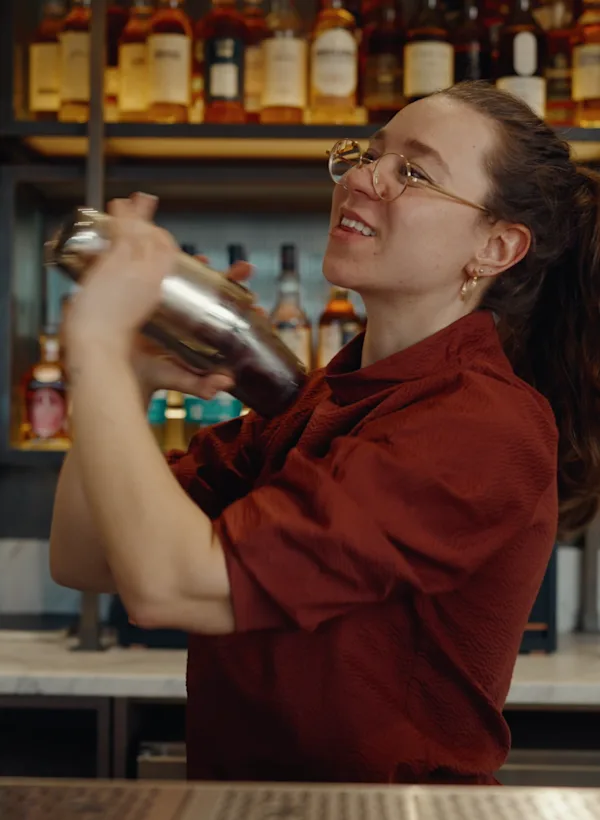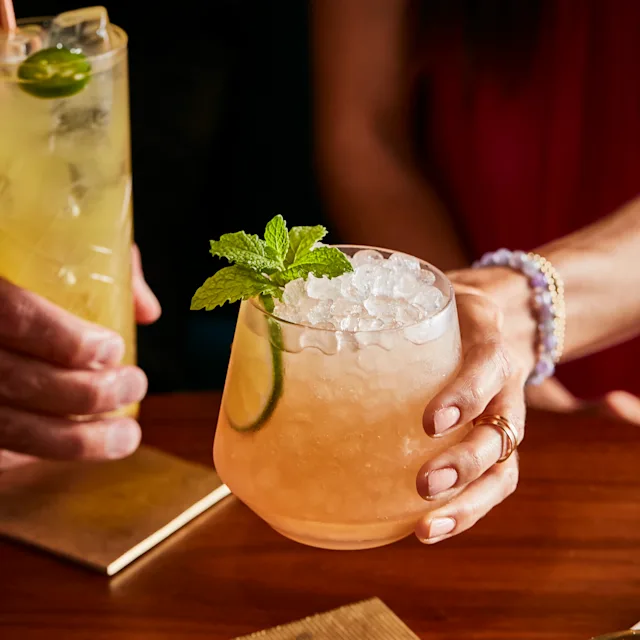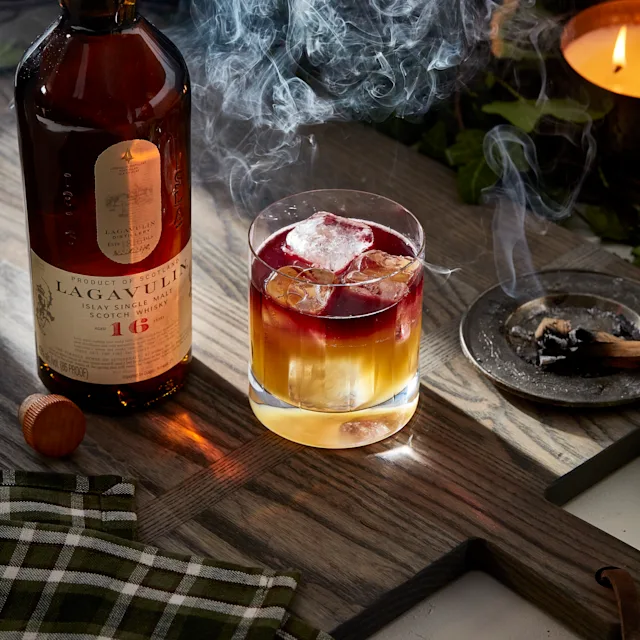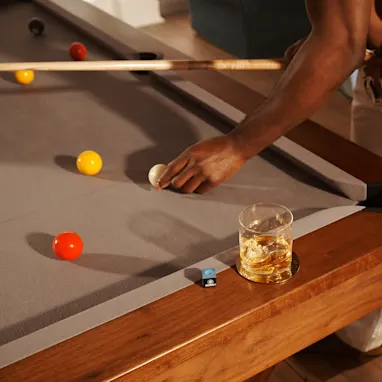The Rise of the Lowball: An Expert Guide to the Lowball Cocktail by Charlotte Barker
It turns out, size doesn't matter. Not when it comes to the growing trend of Lowball whisky drinks, a small-but-mighty presence in the world of cocktails.
Here, Charlotte Barker - a recognised force in the world of whisky having spent her career serving the finest drams in five-star establishments and working with award-winning malts - shares how she came to herald the short king of whisky cocktails, and offers a curated selection of favourite Lowball drinks to try.


How Charlotte discovered the Lowball
I didn’t always like whisky. We acquire the taste, like any spirit, coffee, or red wine. My "aha moment!" started shortly before I started working in it – trying out Christmas-gifted bottles with my then husband. It was the smoky ones that took my liking – comfortingly familiar and warming. I didn’t have to go looking for flavour: each sip was elegantly twisted and wrapped in singed embers and BBQ stickiness.
Working my way through cocktail bars, opening five-hotels, brand work, and whisky clubs, I’ve inched forward in knowledge, love, and passion for whisky. I specialise in Scotch, though adore all countries of whisky; I think I will always naively marvel at the spectrum of tasting notes that’s created by the three simple ingredients of grain, water, and yeast.
Interest in whisky can be broken down into three pillars: flavour, production, stories. However, flavour is a universal language. It has the ability to unite – "this is delicious!", "have you tried this?", "here, taste!". So, let's talk about drinking whisky in its most delicious form.
Neat is always in fashion (but please let’s wave off those that say it can only be drunk this way) yet it’s strong for any palate, being literal alcohol. We mix it up with Old Fashioneds, Sours, and even a simple Whisky and Cola all delicious ways of drinking whisky.
A little love for Highballs first, being more well-known. Long, elegant-looking glasses, comfortable to hold, and easy to relax into. Known as a style of drink (spirit and mixer, usually soda or something bubbly), the idea behind it is that it lengthens the whisky, reducing the abv (alcohol by volume), elongating the experience.
Sounds brilliant, right? Highballs are also the perfect foil to the stirred down and powerful drinks like a Manhattan, often seen as the light opposed to dark, aperitif versus digestif of the cocktail menu, though both can carry gentle fruity flavours or dusky, enticing notes.
Redefining the Lowball
Now, here comes my pitch for you: "Lowball cocktails as a small highball."
Usually an umbrella term for anything in a lowball glass, I want to redefine Lowball cocktails to be specifically bubbly. The short king of drinks: intense and intentional with flavour, spotlighting the main spirit whilst keeping it fresh and lively with carbonation. They happily carry any facet of flavour across spicy herbal savoury, gummy fruit, refreshing tea leaves, bright citrus, or syrupy liqueurs.
They are an any occasion drink.
I admit, the name Lowball may not have the best connotations. Originally referring to a pitch in baseball that didn’t cross the plate within the strike zone, it has grown to mean a low estimate or offer. Within drinking terms it’s the lowball glassware that gives it definition: short and stout, holding less liquid than - you guessed it - the Highball. The glasses are by no means any less glamourous however, with excellent examples showing ridged or diamond patterns, perhaps filigree around the rim, even decoration in a chunky base.

Why try a Lowball? The appeal, from flavour to how to savour
Why does the style of a short highball have such appeal to me? As there is less space inside the glass, we reduce the liquid of course, but mainly bring down the volume of other ingredients. By which I mean everything that’s not the spirit. With a higher ABV, the drink champions the whisky whilst opening it up with bubbles.
In a time of lower ABV cocktails being in vogue, this doesn’t mean that a drink cannot have lower alcohol (best measured in units by the way), just that the ratio is in favour of the whisky. It’s in the spotlight more, not just in the vibrancy of the flavours it contains but in how the other ingredients amplify the flavours.
When sampling and professionally tasting within the whisky (and spirit!) world, we’ll add water to whisky to reduce the alcohol content and its solvent harshness – it becomes more approachable and palatable. But water also opens up a plethora of flavours that would otherwise have remained a mystery beneath high ABV. Soda adds to this as the CO2 aerates certain notes better than regular dilution.

Putting it into practice - changing a Whisky Highball to a Lowball
For example, I love a Whisky Highball. But in a long highball glass the whisky is swathed in soda, it’s washed away. Reducing the ratio to 2:1 – two parts soda to one part whisky – means I can taste the good stuff. It’s simple and straightforward, explores the whisky and gives it space to breathe without swaddling it. A little lemon zest over the top and this lowball turns into a home run.
Here's a quick go-to recipe and method to make a Whisky Lowball.
You'll need:
50ml (1.75oz) whisky (here I like Johnnie Walker Black Label, but try your favourite)
100ml (3.5oz) chilled soda water
To make:
Add ice to a lowball glass, add all the ingredients, spritz lemon zest over the top and enjoy.
Reach For the Peach Cocktail Recipe
It’s not just soda water that works so well in Lowballs. I love pairing the whisky with different aromas within the cocktail, cherry-picking those that will enrich and develop the base spirit. The Reach for the Peach brings out the summery orchard fruits in the whisky, whilst the tea boosts the crinkly ground espresso notes.
To make a Reach for the Peach cocktail, you'll need:
40ml (1.3oz) The Singleton 12 Year Old
15ml (0.5oz) lemon juice
15ml (0.5oz) peach iced tea syrup
40ml (1.3oz) soda water
To make:
Add all ingredients to a lowball glass, fill with ice, and garnish with a lemon slice and thyme sprig.

Fresh Stride Cocktail Recipe
Lowballs are also the perfect accompaniment for food: blending well with tapas, tasting menus, and can be designed to dazzle against creative dishes. Smaller, vibrant sips that can work better than wine at comparing and contrasting, whilst being perfectly beautiful works of art in their own right.
My colleague, Adam Hussein, has a perfect Johnnie Walker Blue Label Lowball that pairs well with a zingy, lightly spicy ceviche.
To make Adam's Fresh Stride you'll need:
40ml (1.3oz) Johnnie Walker Blue Label
20ml (0.6oz) Yuzu Sake
10ml (0.3oz) honey
10ml (0.3oz) lemon juice
25ml (0.75oz) soda water
To make:
Add everything but the soda to a cocktail shaker tin and fill with ice. Give it a very short shake and strain into a glass. Fill with ice, top with soda water, and gently stir to incorporate.
The last word on Lowballs
In short (pun intended), try your whisky as a Lowball with a little lengthener, and see what flavours are uncovered with less liquid. Play around with how you like your whisky – a splash more or less can make the world of difference, and step up to the plate to give one of the recipes above a go at home!




